If you have a look at photographs taken above the water you can often see that the pictures have been edited away from their natural look. For some reason this is something very rarely seen in underwater photographs. It seems like there is some unwritten rule that pictures taken above the water can be altered, twisted and twirled just for the creative effect, but underwater pictures should show the world as it is seen with the human eye.
Well, all rules, unwritten or not, are there to be broken!
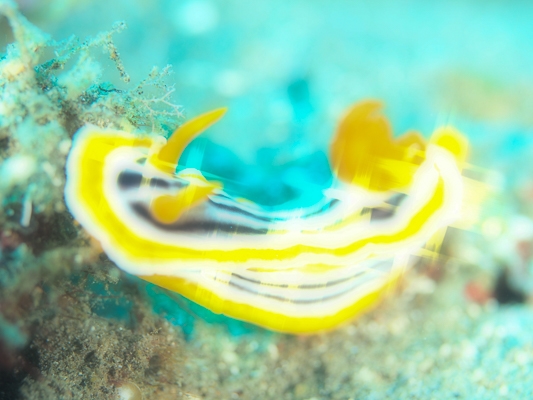
Ann Karin Matberg • OM-D E-M1 Mark II • M.ZUIKO DIGITAL ED 8 mm 1:1.8 Fisheye PRO
• PT-EP14 • PPO-EP02 • 2 x UFL-3
So I gave it a go.
Not by altering the pictures in Photoshop afterwards, but by simply using some of the magnificent and fun art filters that are already installed in the camera. During a long stay in Dauin, Philippines, a place I keep coming back to again and again due to world class muck diving and superb staff at Sea Explorers, I explored this side of my creativity.
This blog will more than anything be about showing you pictures, and less about a lot of words.
Are you worried that you “only” have a compact camera, like a TG-4 or a TG-5 and think that working with art filters is something you can’t do? Think again! The Tough-series, the PEN-series and of course the OM-Ds will give you that option. So get underwater and test it out! You might change the expression of the picture completely, simply by using another art filter on the same subject.
These six pictures of a tube worm are all jpg-files straight from camera. I used art filter-bracketing, that gives me the opportunity to choose several filters to be added to the same original picture (only one filter per version of the picture though). As you can see, the results are quite different from each other.
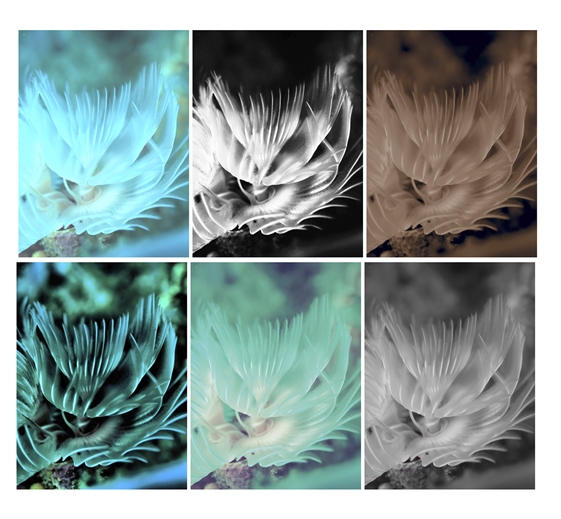
Art filter bracketing
Ann Karin Matberg • OM-D E-M1 Mark II • M.ZUIKO DIGITAL ED 8 mm 1:1.8 Fisheye PRO
• PT-EP14 • PPO-EP02 • 2 x UFL-3
You have many different alternatives to choose from when it comes to the filters. Monochrome pictures are not that uncommon in underwater photography, but using the Key Line-filter, the Dramatic Tone or the Gentle Sepia makes your photo look very different than the original. Or what about using the Partial Color filter, and choosing the only color you want to pop in your picture? If you choose pink, only pink subjects will be colored, the rest will appear in black and white. It is totally up to you to decide what filter to use, and to explore how much fun you can have with them.
Here, I picked yellow using the Partial Color filter.
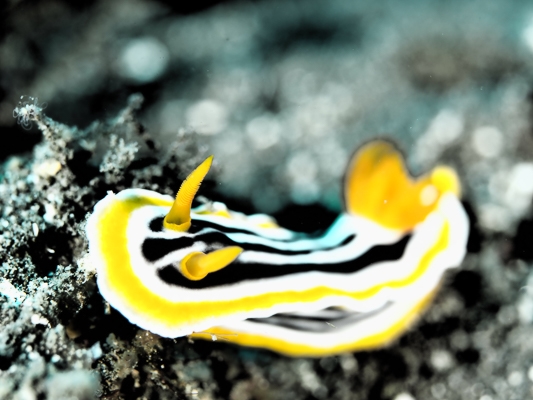
Partial Color filter
Ann Karin Matberg • OM-D E-M1 Mark II • M.ZUIKO DIGITAL ED 8 mm 1:1.8 Fisheye PRO
• PT-EP14 • PPO-EP02 • 2 x UFL-3
Whatever filter you choose, they will all give your picture a completely different look. Some cameras, like my E-M1 Mark II, will even give you an option to choose multiple filters to be added to the same picture, so you can get up to 17 different versions of the same picture! This is the art filter bracketing I showed you examples of with the tube worm. How cool is that?
But be aware that your memory card will fill up quite fast if you take a lot of pictures during a dive and have chosen all the possible filters – one press on the trigger gives you 17 pictures, not the single one you are used to... My guess is that you will find a few favorite filters after you have seen how the various filters affect the final result. One favorite of mine is the dramatic filter. It really adds something spectacular to the picture - in my opinion. You might not like it, and will pick another favorite instead. But that’s the power of choosing.
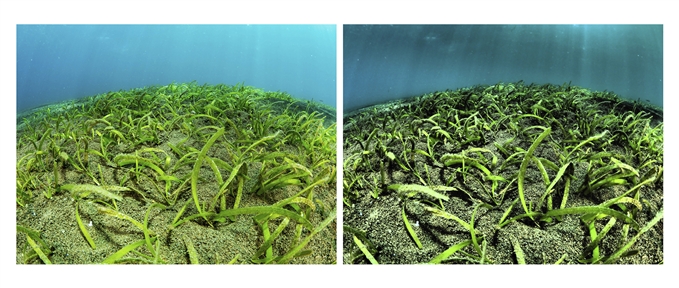 Dramatic tone
Dramatic tone
Ann Karin Matberg • OM-D E-M1 Mark II • M.ZUIKO DIGITAL ED 8 mm 1:1.8 Fisheye PRO
• PT-EP14 • PPO-EP02 • 2 x UFL-3
Here are a couple of pictures where I have shown the original (with normal editing when converted from raw to jpg-file) next to a jpg-file with applied dramatic filter straight from camera. Which one do you like best?
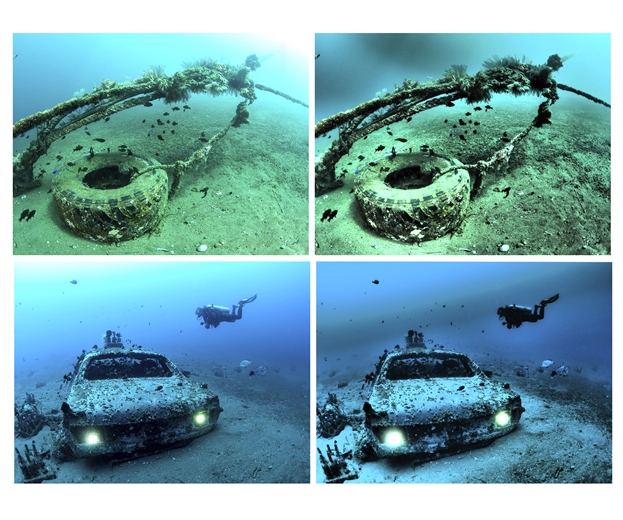
Ann Karin Matberg • OM-D E-M1 Mark II • M.ZUIKO DIGITAL ED 8 mm 1:1.8 Fisheye PRO
• PT-EP14 • PPO-EP02 • 2 x UFL-3
My suggestion is that you shoot both in raw and jpg when you play with filters. The art filter effect will only be added to the jpg-version of the picture, and you might want to keep the raw-file for fine tuning and keeping the natural look of the picture.
Check your camera’s manual to find out exactly how to activate the filters – look for Picture Mode or Art Filters in the descriptions. You often find them at the same place where you change the White Balance (WB).
Be aware that if you have activated the Underwater Mode on your camera, you will NOT be able to use the art filters, so stay away from that when you want to play with these creative effects!

Ann Karin Matberg • OM-D E-M1 Mark II • M.ZUIKO DIGITAL ED 8 mm 1:1.8 Fisheye PRO
• PT-EP14 • PPO-EP02 • 2 x UFL-3
Hopefully some of these pictures have made you curious and willing to “think outside of the box”, and shown you that you do not have to be super creative in order to make your pictures look all but ordinary.
Have fun! Play with the features your camera offers you – and enjoy exploring the world of filters!
Comments
i think whoever posted this is very talented and this was very useful for my dive in argentina with my omd
Show more comments (2)